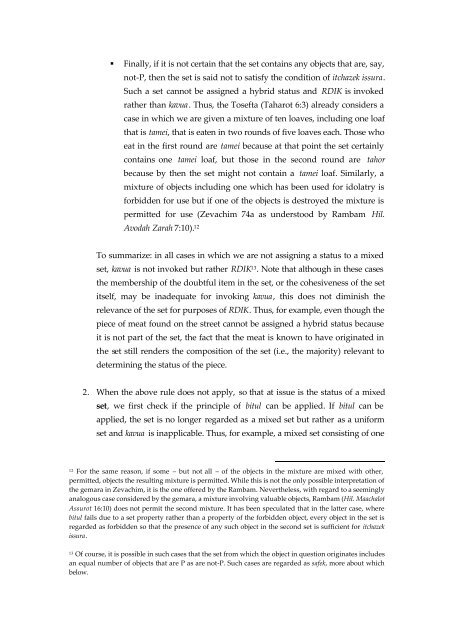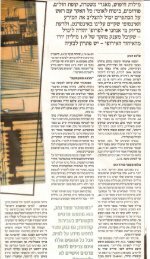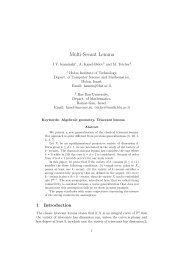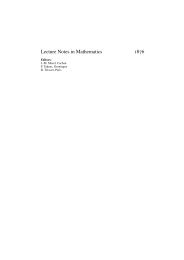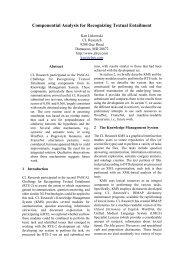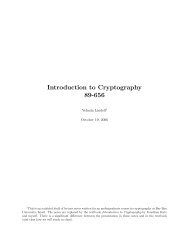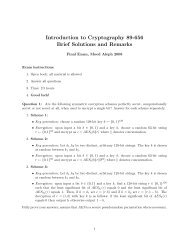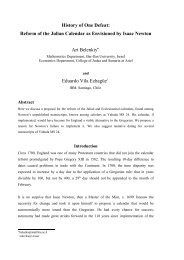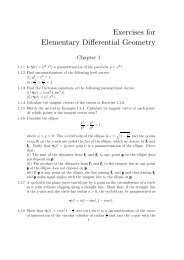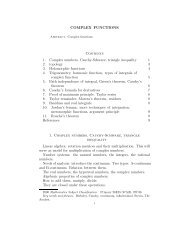Resolving Uncertainty: A Unified Overview of Rabbinic Methods
Resolving Uncertainty: A Unified Overview of Rabbinic Methods
Resolving Uncertainty: A Unified Overview of Rabbinic Methods
You also want an ePaper? Increase the reach of your titles
YUMPU automatically turns print PDFs into web optimized ePapers that Google loves.
• Finally, if it is not certain that the set contains any objects that are, say,<br />
not-P, then the set is said not to satisfy the condition <strong>of</strong> itchazek issura.<br />
Such a set cannot be assigned a hybrid status and RDIK is invoked<br />
rather than kavua. Thus, the Tosefta (Taharot 6:3) already considers a<br />
case in which we are given a mixture <strong>of</strong> ten loaves, including one loaf<br />
that is tamei, that is eaten in two rounds <strong>of</strong> five loaves each. Those who<br />
eat in the first round are tamei because at that point the set certainly<br />
contains one tamei loaf, but those in the second round are tahor<br />
because by then the set might not contain a tamei loaf. Similarly, a<br />
mixture <strong>of</strong> objects including one which has been used for idolatry is<br />
forbidden for use but if one <strong>of</strong> the objects is destroyed the mixture is<br />
permitted for use (Zevachim 74a as understood by Rambam Hil.<br />
Avodah Zarah 7:10). 12<br />
To summarize: in all cases in which we are not assigning a status to a mixed<br />
set, kavua is not invoked but rather RDIK 13 . Note that although in these cases<br />
the membership <strong>of</strong> the doubtful item in the set, or the cohesiveness <strong>of</strong> the set<br />
itself, may be inadequate for invoking kavua, this does not diminish the<br />
relevance <strong>of</strong> the set for purposes <strong>of</strong> RDIK. Thus, for example, even though the<br />
piece <strong>of</strong> meat found on the street cannot be assigned a hybrid status because<br />
it is not part <strong>of</strong> the set, the fact that the meat is known to have originated in<br />
the set still renders the composition <strong>of</strong> the set (i.e., the majority) relevant to<br />
determining the status <strong>of</strong> the piece.<br />
2. When the above rule does not apply, so that at issue is the status <strong>of</strong> a mixed<br />
set, we first check if the principle <strong>of</strong> bitul can be applied. If bitul can be<br />
applied, the set is no longer regarded as a mixed set but rather as a uniform<br />
set and kavua is inapplicable. Thus, for example, a mixed set consisting <strong>of</strong> one<br />
12<br />
For the same reason, if some – but not all – <strong>of</strong> the objects in the mixture are mixed with other,<br />
permitted, objects the resulting mixture is permitted. While this is not the only possible interpretation <strong>of</strong><br />
the gemara in Zevachim, it is the one <strong>of</strong>fered by the Rambam. Nevertheless, with regard to a seemingly<br />
analogous case considered by the gemara, a mixture involving valuable objects, Rambam (Hil. Maachalot<br />
Assurot 16:10) does not permit the second mixture. It has been speculated that in the latter case, where<br />
bitul fails due to a set property rather than a property <strong>of</strong> the forbidden object, every object in the set is<br />
regarded as forbidden so that the presence <strong>of</strong> any such object in the second set is sufficient for itchazek<br />
issura.<br />
13<br />
Of course, it is possible in such cases that the set from which the object in question originates includes<br />
an equal number <strong>of</strong> objects that are P as are not-P. Such cases are regarded as safek, more about which<br />
below.


